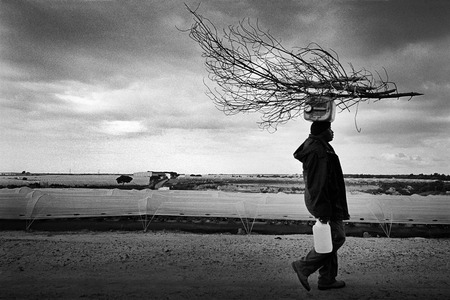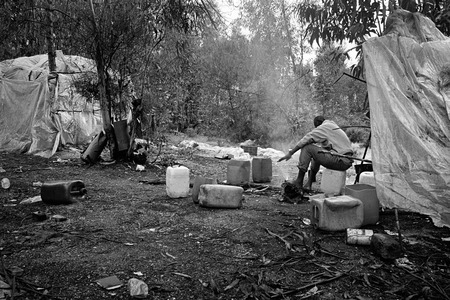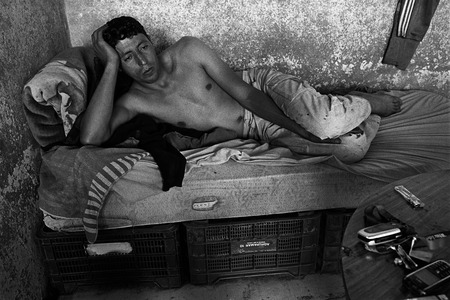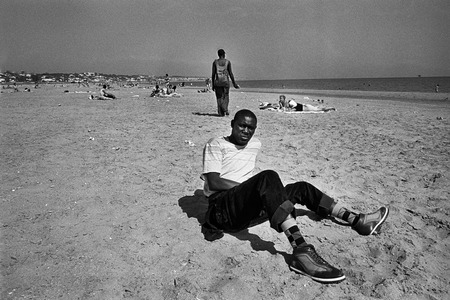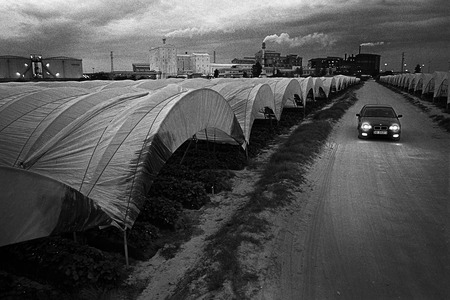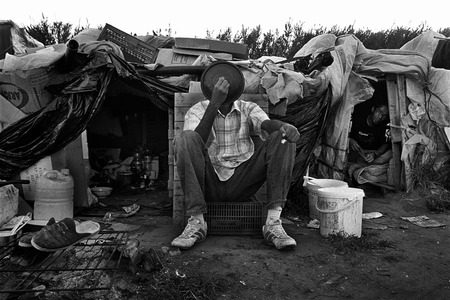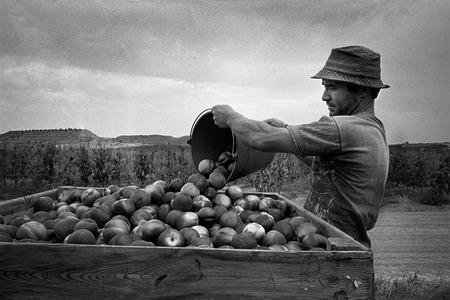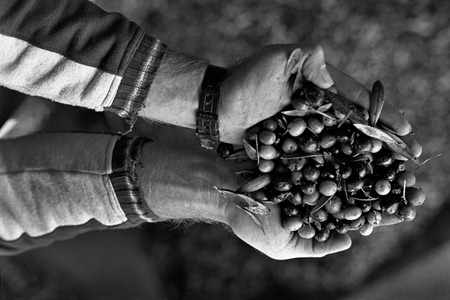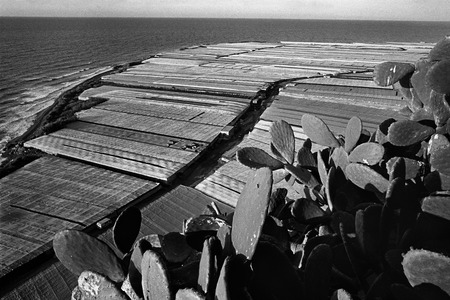The Garden of Europe or the Third World
(Select an image to read the introduction. Below the introduction 'Reportage' will take you to the gallery.)
The Garden of Europe or the Third World (Cross-reference)
This gallery is the principal report for this series, made up of different stories (see below) collected in Spain between October 2006 and the end of 2007 on the theme of immigration and intensive agriculture. From the point of view of the Spanish this is the "garden of Europe" (huerta de Europa), but for the immigrant workers it is the "troisième monde" (an equivalent to the third world).
Palos (Strawberries) : Life in the Forest
At the beginning of March, after spending some time in Almeria to follow the farmer during the height of the tomato harvest, I went to the province of Huelva, still staying within Andalusia, to photograph the work going on in the strawberry fields and orange orchards.
Palos (Strawberries) : Work in the Strawberry Fields
Disoriented at first, I quickly got back into step with the labourers criss-crossing Almeria or Baena. Some had already found work, others waited for the peak season, sleeping in the street or in the forest at the edge of the fields.
Palos (Strawberries) : Just after Work
Here, the work of picking strawberries is mainly carried out by women come from the countries of the east and Morocco, under agreements between the several countries (contrato en origen).
Palos (Strawberries) : Life Outside of Work
For about three months, I documented as much as possible: the situation of immigrant workers from all over Spain, whether they have papers or not.
Palos (Strawberries) : Ecological Problems
Doñana National Park, designated a World Heritage Site by UNESCO, is endangered by the cultivation of 95% of Spain's strawberry crop on a surface of 5,000 hectares and treated with a massive amount of chemical fertilizer.
Leppe (Oranges and Strawberries)
After some time in Almeria I went to the province of Huelva, still in Andalusia, to photograph the work in the strawberry fields and orange groves.
Logrono (Grapes)
In October, I followed some of the migrants who were going to Logrono, in the province of Rioja, to help with the grape harvest.
Lerida (Apples Peaches Pears)
From mid-July to the end of September I returned several times to Lerida, The Capital of Fruit, according to the city's Office for Tourism: "39,000 hectares of apples, pears, peaches, cherries, apricots and plums that produce more the 900 million kilos of fruit when weather conditions are good.
Baena (Olive Oil)
At the end of November many of the agricultural workers left to look for work in the province of Jaén. The olive harvest was beginning. I followed them.
Almeria (Tomatos Zucchini Watermelon)
Almeria where 400,000 hectares of arid land are devoted to greenhouse agriculture and make up the largest concentration of intensive vegetable production in the world.
